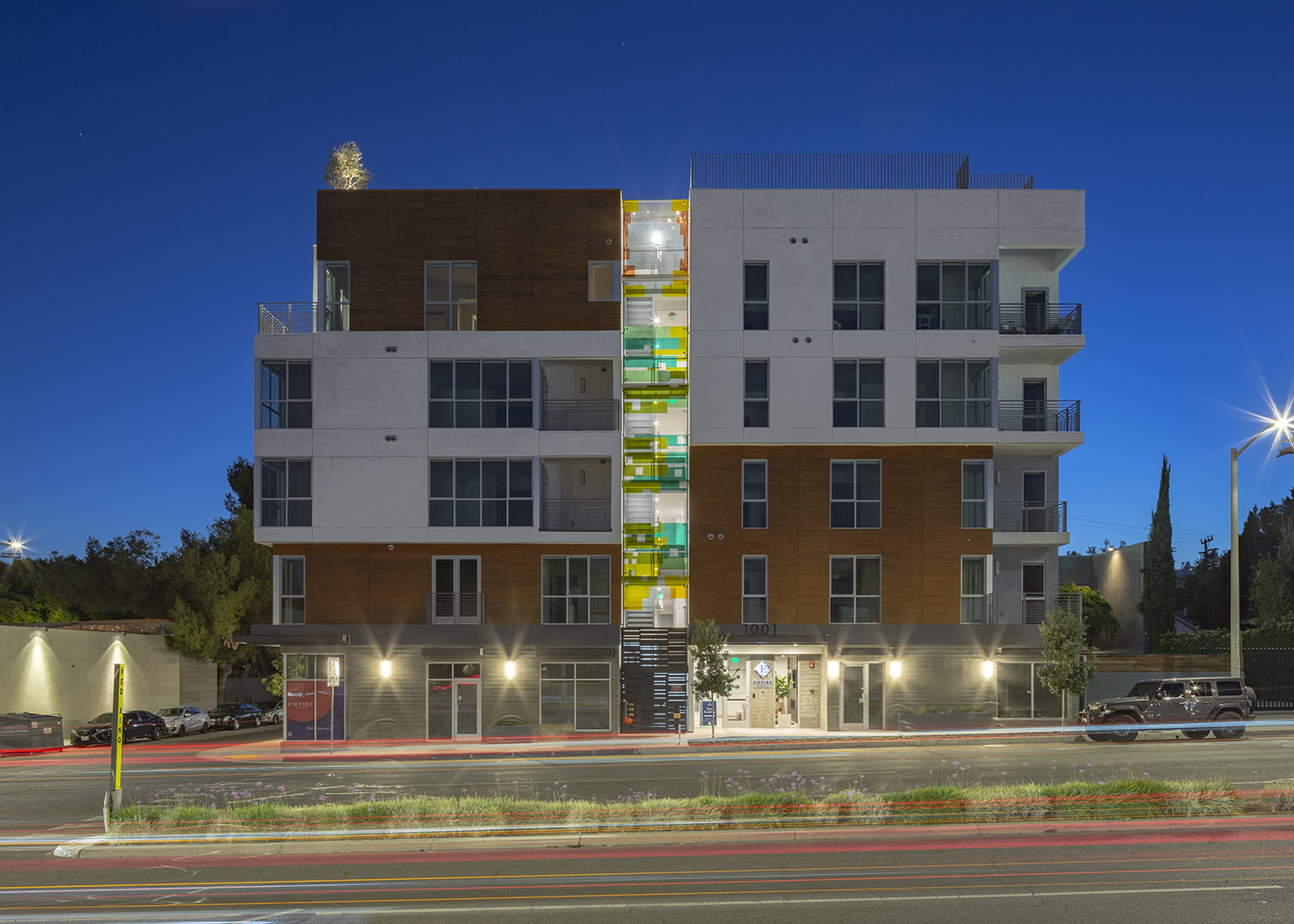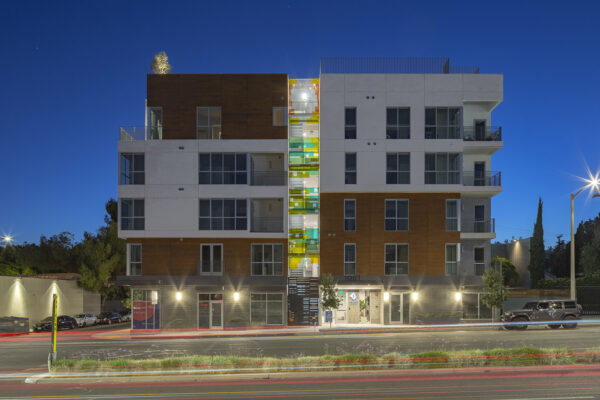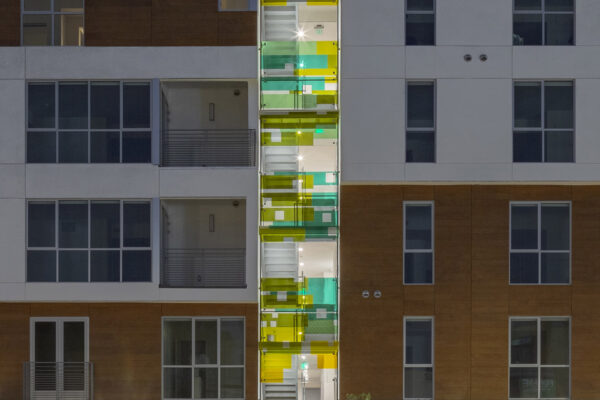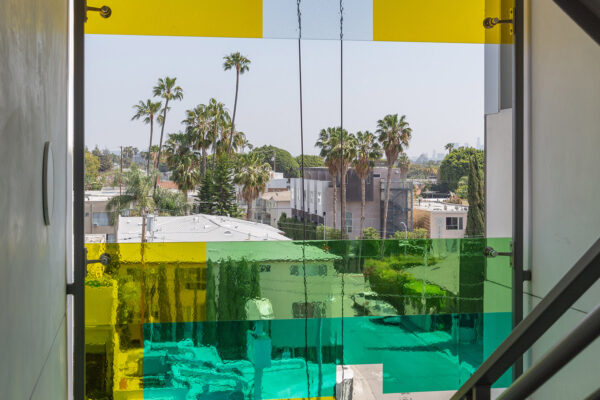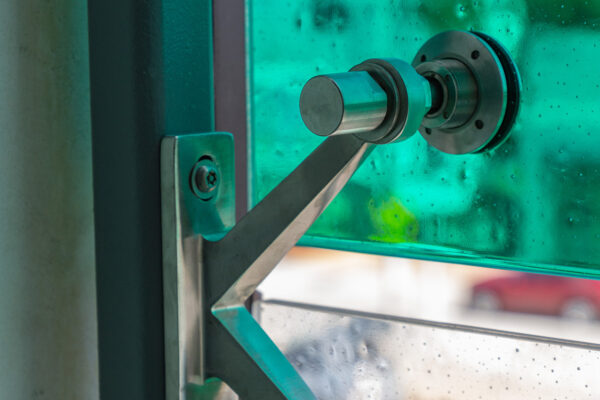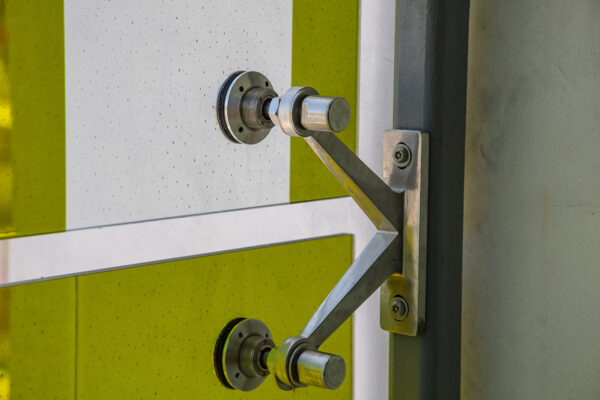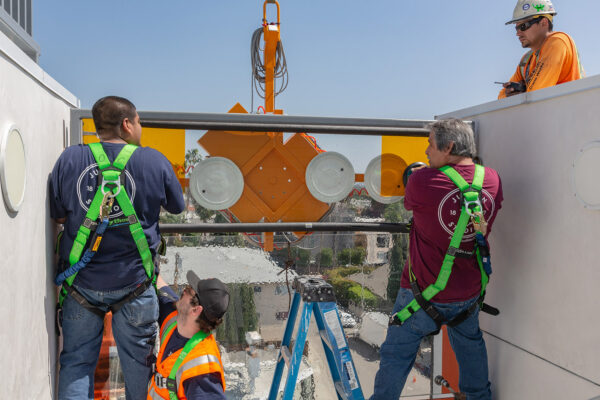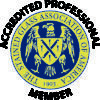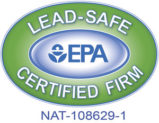By Laurie Frick
Client: Empire Property Group
Work: Fabrication & Installation
Category: Artist & Designer Collaboration, Commercial Installation
Materials: Fused Glass
Place: 1001 N Fairfax Ave, West Hollywood, CA
Designed by L.A.-born, Austin-based data artist Laurie Frick, FLOW: Fairfax Traffic Data bisects the façade of the elegant new 5-story Empire at Fairfax residences on Fairfax at Romaine, one block south of Santa Monica Blvd. The brightly colored kiln-fired glass art used by the artist to visualize traffic patterns in the busy neighborhood creates an iconic landmark within this vibrant Fairfax district, an integral part of the modern building designed by Levin-Morris Architects.
“For this massive project, I wanted an idea that will appeal not only to people who live in the building and see it up close but also to the random driver who passes by or the commuter who drives by that spot every day. A simple graphic pattern that people would be happy to see day after day,” said Frick. “Growing up in Los Angeles, I know how essential traffic patterns are to life here. With this work, traffic data becomes something artful in a section of the city where traffic is not normally beloved.”
Using the data from West Hollywood’s Open Data portal, the artist-built bar charts tracking hourly, midnight to midnight, the number of northbound and southbound cars traveling Fairfax and Romaine. The highest traffic flow is represented in deep green, the lowest in red. Frick worked in yellow, lime, olive, green, and red glass to accurately represent this flow, using small squares of clear glass to map cumulative traffic over 24 hours of collected data. She flipped northbound and southbound charts on end, overlapping them to fit into the tall, narrow glass façade that covers the building’s exterior stairwell bottom to top, creating colorful patterns visible from blocks away.
Frick worked with world-renowned glass masters at Judson Studios to bring her designs to life in custom-built kiln-formed glass, achieving effects that were not possible in traditional stained glass. By layering combinations of colored and clear glass cut to precise shapes, then heating them in a kiln to fuse the sheets together and laminated, the panels were prepared for their architectural setting. FLOW was crafted, built, and assembled at Judson Studios’ state-of-the-art glass studio in South Pasadena.
